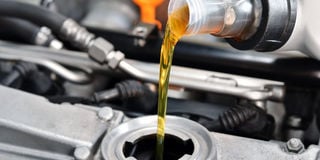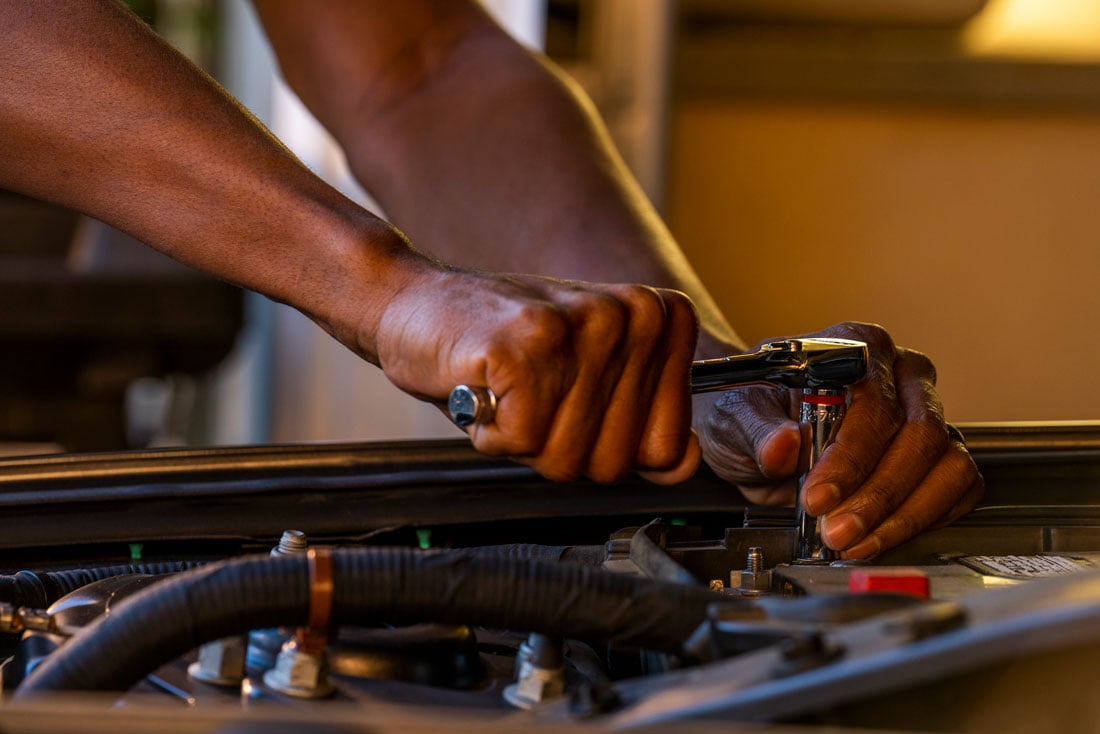Ask the Mechanic: Why does my Toyota Vitz use so much engine oil?

Hello Paul, I have a Toyota Vitz 1.3L 2009 model with a 2SZ fe engine. The engine oil level goes down by 300ml every 1,000kms. There is no leakage in the engine or under the car. It is mainly driven in the city centre daily for about 20 to 30kms only. The inside of the exhaust is black but does not emit smoke. Please help me diagnose the problem.
Zahil
Hello Zahir, it seems your Toyota Vitz 2SZ engine burns about 1.5 litres of engine oil for every 5,000km service interval, which is quite a lot. The absence of any oil leaking points around the engine points in the direction of worn out piston rings inside the engine, which should be confirmed with an inspection. A normal engine is expected to burn or consume about 0.5 of a litre over 5,000kms. This is usually vented through the PCV (Positive Crank Case ventilator).
Common causes of engine oil consumption include worn out piston rings and valve stem seals. These two components wear out due to poor quality lubrication caused by delayed service or use of wrong type/counterfeit engine oil. Damaged piston rings and valve stem seals allow oil to seep past them into the combustion chamber where it is burnt. A leaky cylinder head gasket can cause the same oil cross flow, while a bad PCV valve will cause venting of excessive amounts of oil.
To confirm that the engine is burning oil, get an experienced mechanic to carry out an inspection of the spark plugs and look for signs of burnt oil deposits, which is usually an indication of oil intrusion in the combustion chamber. A compression test will give an indication of how severe the oil consumption is. The Vitz most likely emits some blue smoke when you accelerate as you drive. A repair plan must not be delayed to avoid further damage to the engine.

MY GEARBOX IS NOT SHIFTING FROM REVERSE TO DRIVE
Hello Paul, I recently noticed a very sharp noise when starting my car. I involved a mechanic and the problem was solved. However, the car developed another problem of shifting gears from reverse to drive. What advice can you give me?
Simon
Hello Simon, failure to shift gears from reverse to drive seems as though your gearbox has a mechanical failure of the gear linkage. These are rods and laddles that connect the shift stick to the gearbox selector switch. The gear linkages help you remotely select different modes from parking, reverse to drive and neutral, if you need to.
It may be necessary to establish if the recent fix of the sharp noise you described may have dislodged or misaligned the gear linkages, which are under the car floor.
Another possible cause of gear shift challenges is failure of the gear shift module, which actively selects the different gear modes when you move the shift stick.
Should these two areas turn out fine, then the mechanic can inspect the gearbox oil levels or carry out a diagnosis of the transmission computer to rule out gear solenoid failure.
HOW DOES EXCESSIVE SUNLIGHT DAMAGE MY CAR?
Hello Paul, I have been parking my car exposed to sunlight for about eight hours a day for two years and I have noticed the paint on the roof and bonnet is fading. Besides fading, what is the long-term effect of exposing a car to too much sunlight?
Derek
Hello Derek, exposure of your car to so much sunlight can cause a wide range of damage besides paint fading or discolouring. The degradation of paint can develop into corrosion damage of the body. Plastic components on the interior such as dashboard, door cards, centre console and knobs can react to the strong ultra violet rays by cracking or tearing. Upholstery fabric can fade or tear while roof linings usually sag or drop as their attachment foam material and glue become flaky. This will make your car interior less inviting.
Rubber components on your car such as door or window seals will degrade, tear or develop leaks or squeaky noise. Window machines may suffer from water intrusion because of the leaky seals. Head lights may become hazy while tail lights may also fade or crack because of being too brittle. To mitigate this sort of damage consider parking where there is ample shade. In absence of a permanent shade, one can improvise with a portable car cover to reduce sun glare and damaging effects.




